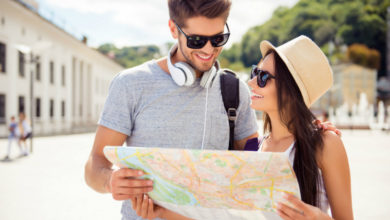The Evolution of the Charter Bus

Charter buses have a storied history, beginning with the horse-drawn carriages of the 19th century, and evolving into the motorized vehicles we know today. This article explores the development of the Chicago Bus Charter services, examining the technological innovations, service improvements, and their impact on society.
The Dawn of Charter Buses
- Horse-drawn era
The 19th century introduced the first semblance of a charter bus, a horse-drawn omnibus. These vehicles were able to carry more than one passenger, making them more efficient than other modes of transportation at the time. The vehicle’s basic design included a large compartment mounted on a wooden frame supported by iron wheels. Horse-drawn omnibuses quickly grew in popularity due to their capacity, cost-efficiency, and convenience.
- The Motorized Era
As the era of the Industrial Revolution took hold in the late 1800s, technological innovations led to the creation of motorized buses. The first motorized buses were steam-driven, but the invention of the internal combustion engine in the late 1800s brought about the era of gasoline-driven buses. Their increased speed and low operating cost significantly reduced transit times and instigated a shift from horse-drawn omnibuses to motorized buses.
The Modernization of Charter Buses
- The Age of Diesel
As technology continued progressing, diesel engines replaced gasoline engines in buses during the early 20th century. Diesel engines were favored due to their durability, fuel efficiency, and environmental benefits compared to gasoline engines. This transition marked a significant milestone in the evolution of charter buses.
- The Comfort Era
As competition in the travel industry increased in the mid-twentieth century, charter bus companies began to seek new ways to enhance customer experience. This led to the introduction of amenities such as air conditioning, comfortable seating, toilets, and even onboard entertainment like televisions and music players.
Charter Buses and their Impact on Society
Charter buses have not only evolved from a technological standpoint but have also had a profound societal impact.
- Mobility
Charter buses have provided an affordable and efficient means of transportation for the masses, connecting rural and remote areas to major cities, and offering an alternative to individual car ownership.
- Environmental Impact
With the rising concern for the environment, charter buses are a greener choice for transportation, emitting less carbon dioxide per passenger compared to private vehicles.
Conclusion
Over the centuries, the Chicago Bus Charter has demonstrated a remarkable ability to adapt and evolve, from horse-drawn carriages to modern, technologically sophisticated vehicles. Despite the rise in personal vehicle usage and air travel, the charter bus retains an essential position in the transportation landscape due to its affordability, convenience, and environmental benefits. Looking into the future, it is anticipated that charter buses will continue to evolve in line with technological advancements and changing societal needs.






